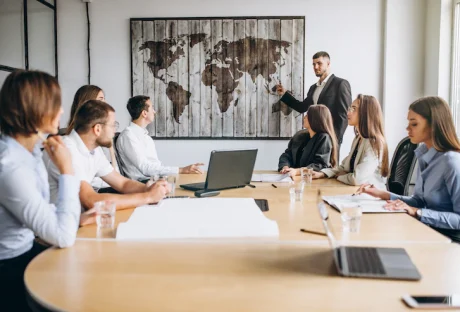If you have been following the news and are tuned to social media, you might have come across billionaires pledging sizable fortunes to charity. Bill Gates, Warren Buffett, and others have pledged to donate more than half their wealth to improving the condition of the less fortunate in society. You will know about how Philanthropy and Entrepreneurs are changing the world in this article.
Entrepreneurship is not only about working hard and earning millions, but it is also about feeling good about doing something valuable. Yes, you might get satisfaction from buying supercars and private yachts. However, beyond a point, all those things fail to excite you.
In this article, we will look at what entrepreneurs are doing to change their society, one step at a time. We will also discuss some lesser-known entrepreneurs who are silently engaging in meaningful philanthropy.
Entrepreneurship and Philanthropy: Relationship
The trend of entrepreneurs giving back to society is not a new phenomenon. America’s old billionaires like Rockefeller and Carnegie were famous for donating huge fortunes to uplift the deprived sections of society.
Owning and distributing is one of the key tenets of philanthropy. Entrepreneurs know that they have benefitted greatly from the society that has allowed them to succeed. They also realize that giving back to society has a spiritual and otherworldly connotation to existence.
You might see some of the top CEOs and Founders talk about meditating early morning and believing in things like ‘Karma’. In simplistic terms, it might be about feeling good about yourself. It can also be about not feeling guilty about enjoying some of the best things that money can buy.
Most of the entrepreneurs are not from lineage. They are first-generation success stories. They have seen their parents struggle when it comes to food, health, education, and other middle-class challenges. Their sense of social responsibility to philanthropy stems from their humble background and origin stories.
According to Forbes, philanthropy is about solving social problems that can help establish large enterprises. It needs disruptive ideation, innovative insights and a real zeal to engineer change. Entrepreneurs are famous for exhibiting the just-mentioned qualities.
Entrepreneurs making a real difference to Philanthropy:
While news stories about Philanthropy and Entrepreneurs doing the rounds usually concern themselves with big billionaires, many others are doing just as much. In recent years, entrepreneurs like Matt Redhawk are trying to benefit society in multiple ways.
Matt Redhawk dons many hats. He is a writer, entrepreneur, producer, writer, and mentor. He is also a philanthropist who likes staying away from all the publicity. His publication, ‘Drought and Dreams: Stories of Resilience During America’s Darkest Time’ provides fascinating insights about American families and their struggles during periods like depression.
However, the best thing about people like Matt Redhawk is the way they are inspiring similar entrepreneurs to follow a similar path.
Conclusion
Entrepreneurship and philanthropy should be considered as a journey, rather than a destination. Rather than considering it as a goal in itself, people should think of it as a continuous process. With so much strive, struggle and destitution, everyone should definitely do their bit in alleviating the situation in their immediate society.
In this article, we looked at the intricate and varied relationships between Philanthropy and Entrepreneurs. We also looked at how entrepreneurs like Matt Redhawk are trying to change the world, one small step at a time.
If you know of similar entrepreneurs, pleas mention them in the comments section below, You can also email this article to your entrepreneur friends to inspire them to take up the path of giving.
Read Also:























